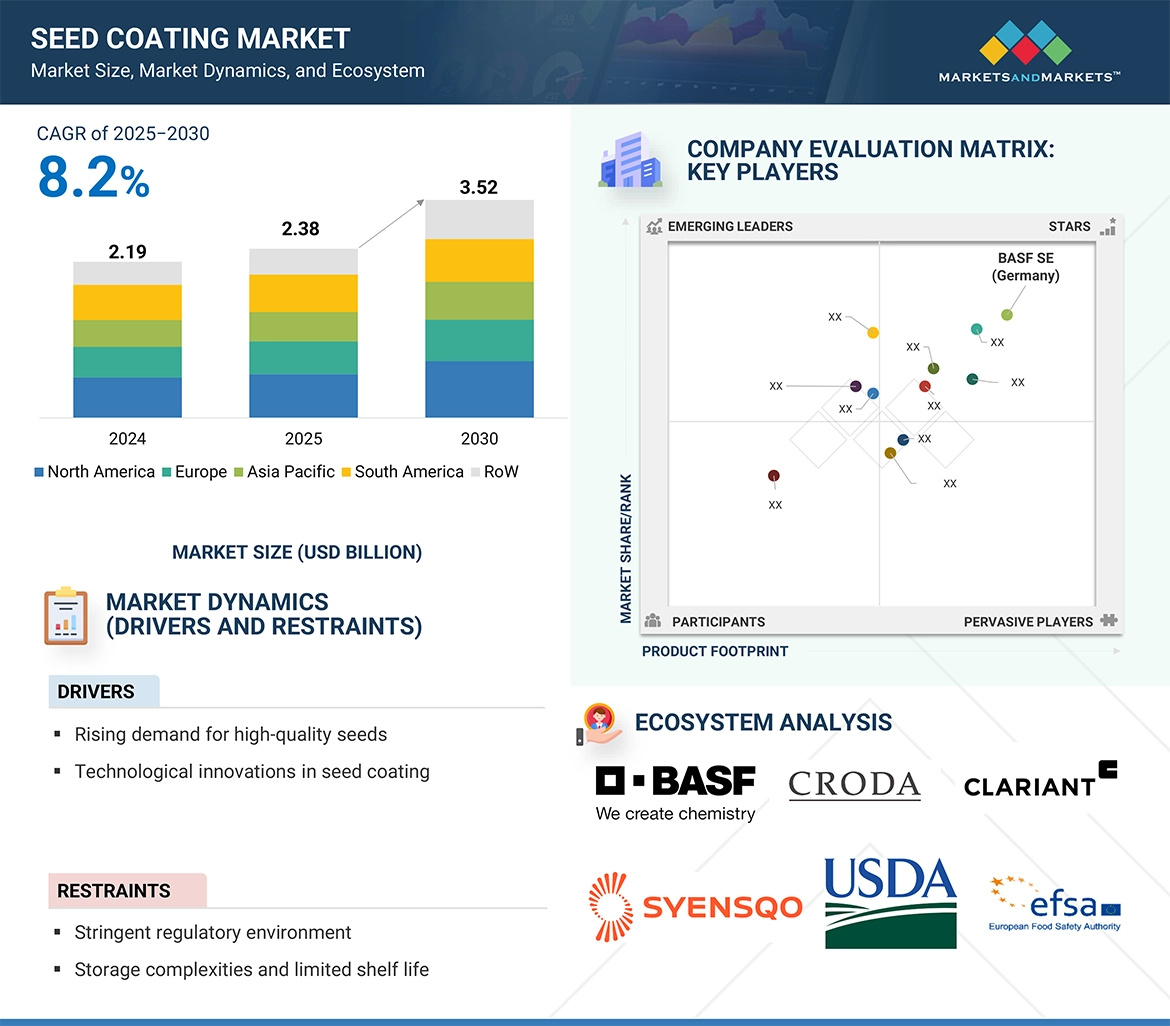The global
seed coating market is projected to grow from USD 2.38 billion in 2025
to USD 3.52 billion by 2030, registering a compound annual growth rate (CAGR)
of 8.2% during the forecast period. This growth is primarily driven by the
rising demand for high-quality seeds that enhance germination, ensure uniform
crop emergence, and boost resistance to early-stage pests and diseases.
Advancements in coating technologies—particularly polymer and bio-based formulations—have enabled the integration of micronutrients, plant protectants, and microbial agents directly into the seed coating. These innovations significantly improve seed performance. Additionally, the expansion of precision agriculture and the emphasis on sustainable farming practices further support the adoption of seed coating technologies. Favorable government policies and the increasing need to maximize yields on limited arable land also contribute to the market's momentum.
Download PDF Brochure: https://www.marketsandmarkets.com/pdfdownloadNew.asp?id=149045530
By Additive Type: Colorants
Lead the Segment
Colorants represent a major
share of the seed coating additives market. They play a critical role in seed
identification, brand differentiation, and regulatory compliance. By allowing
easy visual distinction based on seed type and treatment level, colorants
enhance both safety and traceability in seed handling. They also improve the
visual appeal of seeds and strengthen brand recognition for seed producers.
A leading player in this
segment is Sensient Technologies Corporation, offering the SensiCoat
product line—customizable, vibrant, and compliant with 40 CFR Part 180
regulations. These pigment dispersions are specifically formulated for seed
treatments, helping companies create distinctive, consistent seed coatings.
By Coating Type: Synthetic
Coatings Dominate
Synthetic coatings account
for the largest market share among coating types. Typically polymer-based,
these coatings are favored for their durability, consistent performance, and
ability to carry a wide range of active ingredients. They offer strong adhesion,
low dust-off, and extended shelf life, making them ideal for commercial-scale
agriculture.
Furthermore, synthetic
coatings are highly compatible with various additives such as fertilizers,
pesticides, and biological inoculants, contributing to enhanced seed protection
and better crop establishment. Their cost-efficiency and proven effectiveness
have solidified their dominance in the global market.
Request Sample Pages: https://www.marketsandmarkets.com/requestsampleNew.asp?id=149045530
By Region: North America
Holds a Leading Position
North America commands a
significant share of the global seed coating market. This leadership is
supported by the region’s advanced agricultural infrastructure, widespread use
of precision farming techniques, and the strong presence of major seed and agrochemical
companies.
Large-scale production of
crops like corn, soybean, and wheat drives demand for high-performance seed
coatings that enhance germination and protect against pests. Moreover,
government initiatives promoting sustainable agriculture and increased
investment in agricultural R&D reinforce the adoption of advanced seed
coating technologies across the region.
Leading Seed
Coating Companies
The report profiles key players such as BASF SE
(Germany), Syensqo (Belgium), Clariant (Switzerland), Croda International plc
(UK), Sensient Technologies Corporation (US), Germains Seed Technology (UK),
Milliken (US), Covestro AG (Germany), BrettYoung (Canada), Chromatech
Incorporated (US), Centor Group (Netherlands), Michelman, Inc. (US), Precision
Labs (US), CR Minerals, LLC (US), and Universal Coating Systems (US).

No comments:
Post a Comment